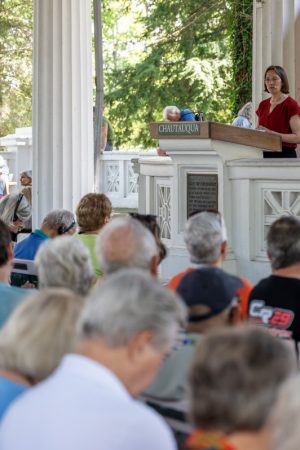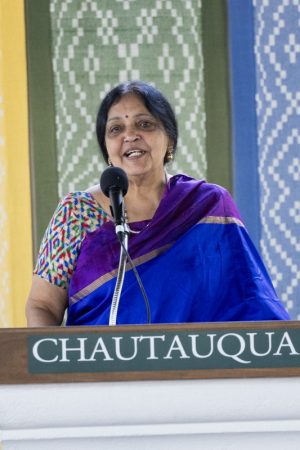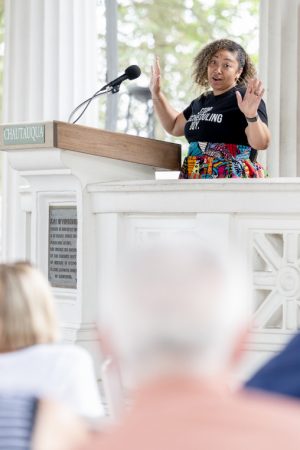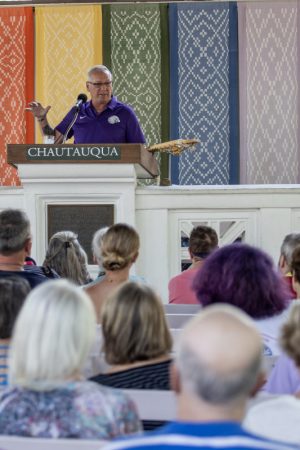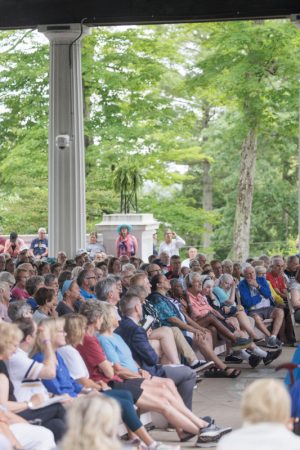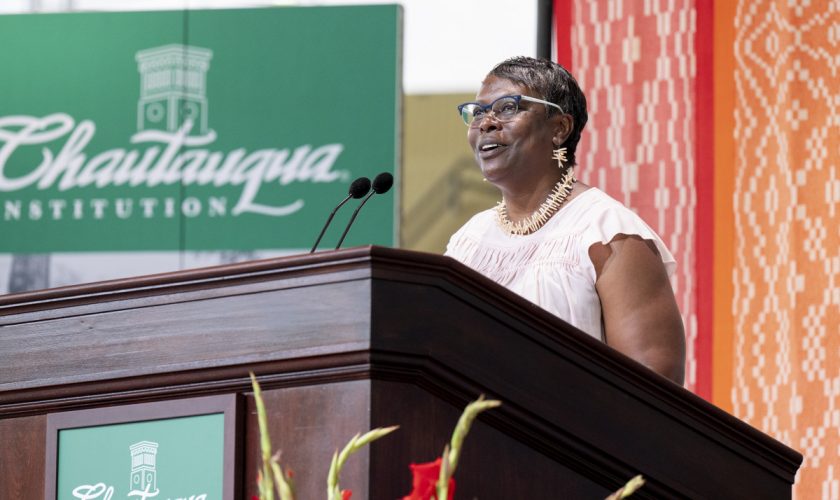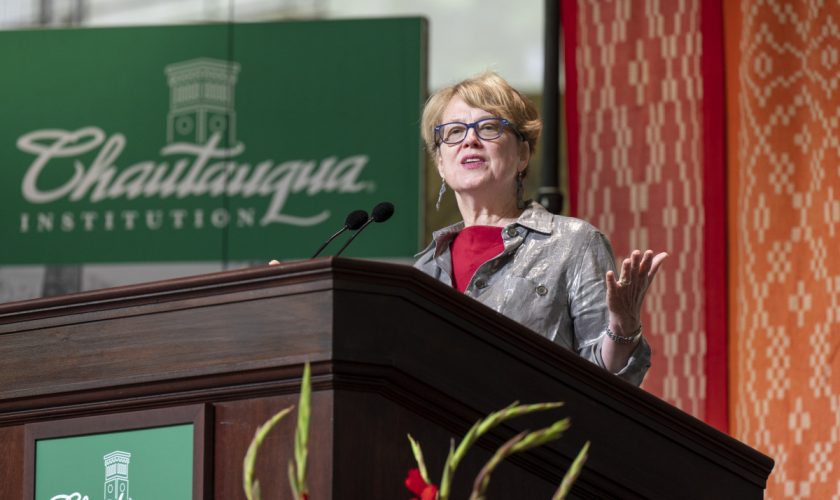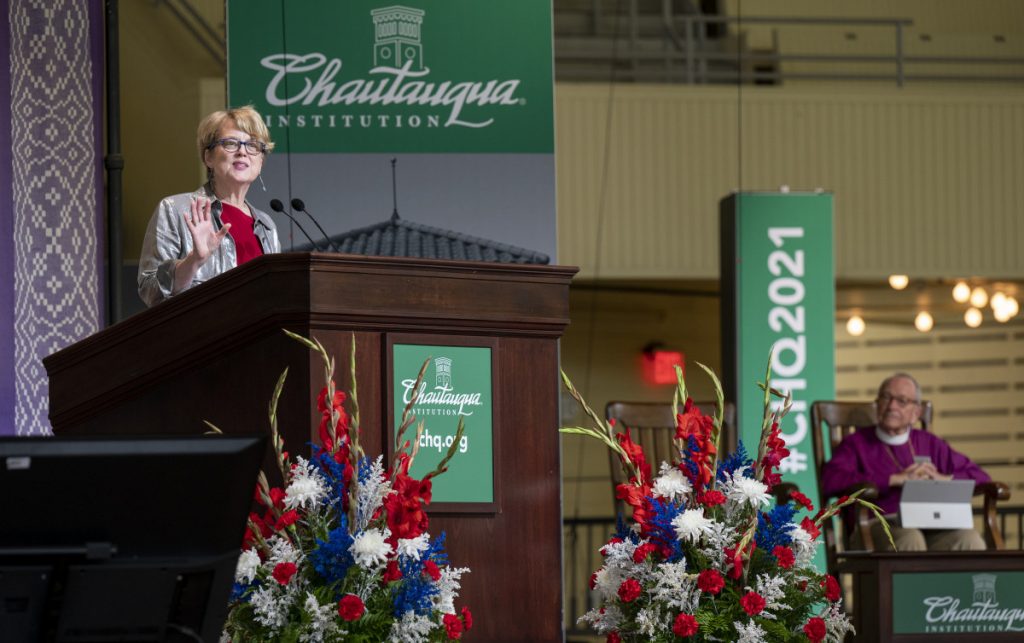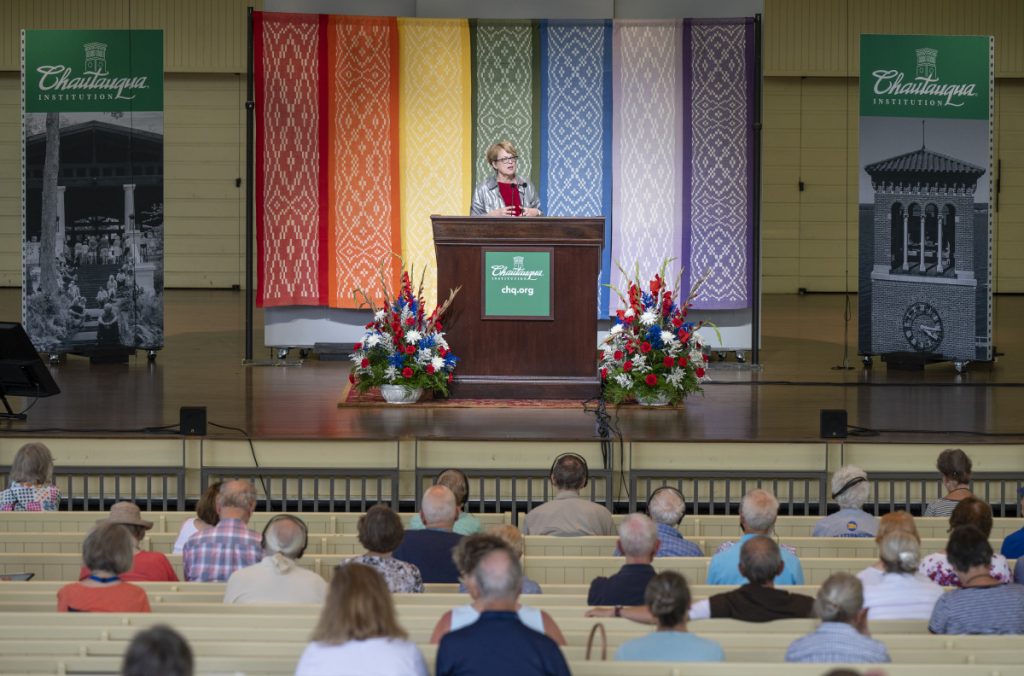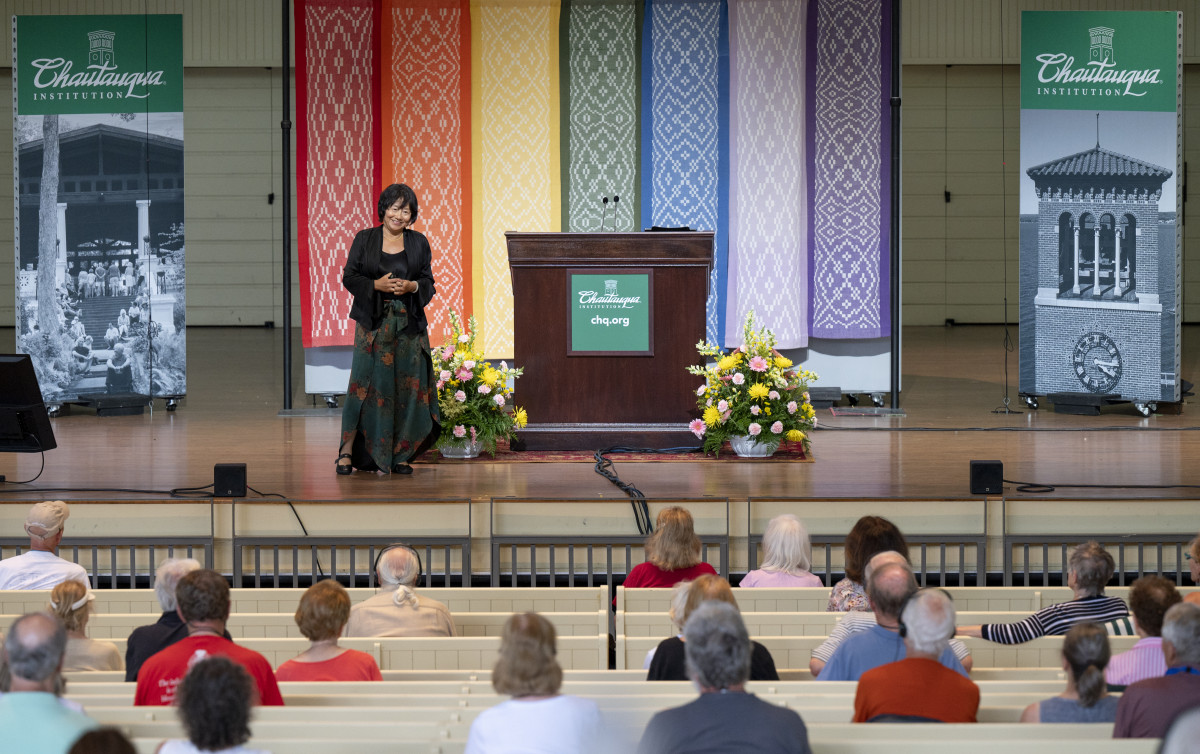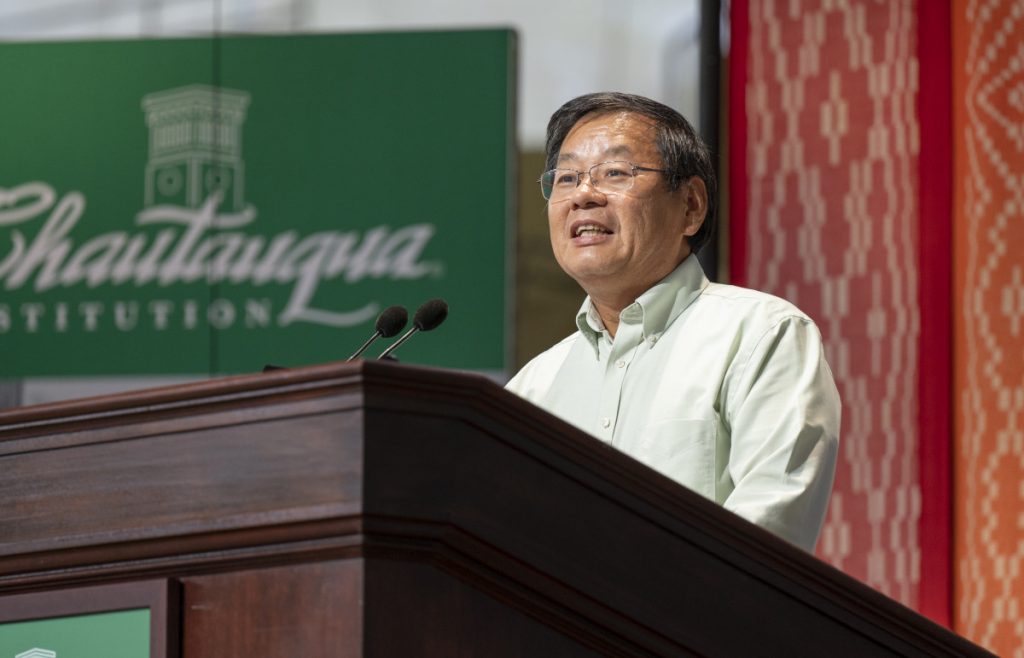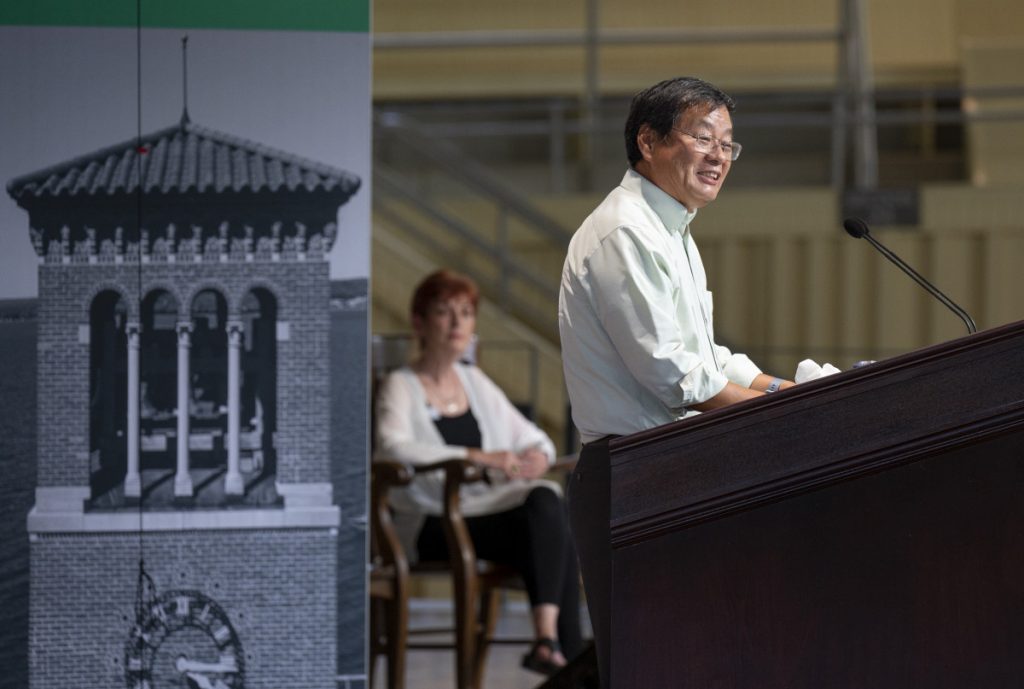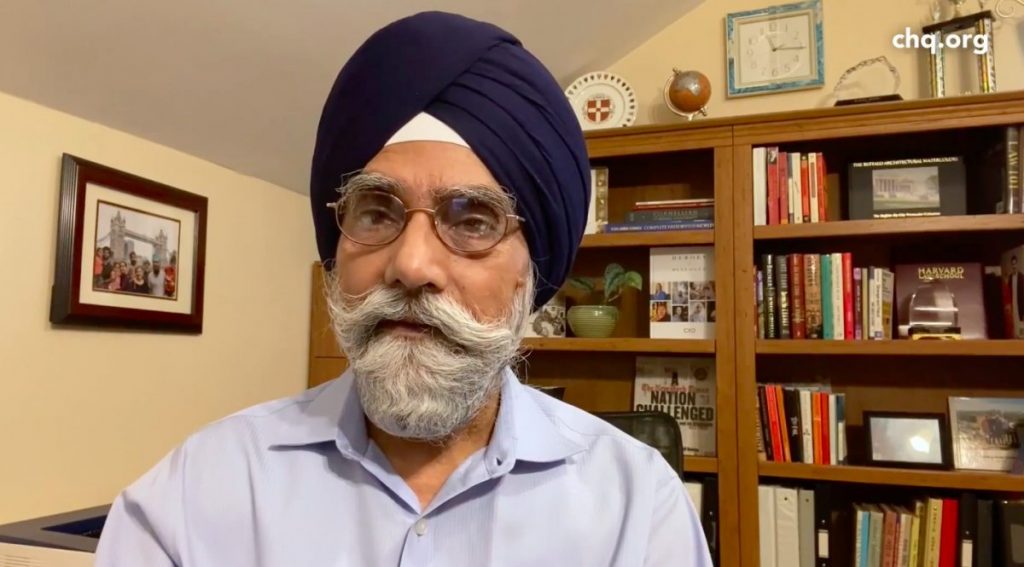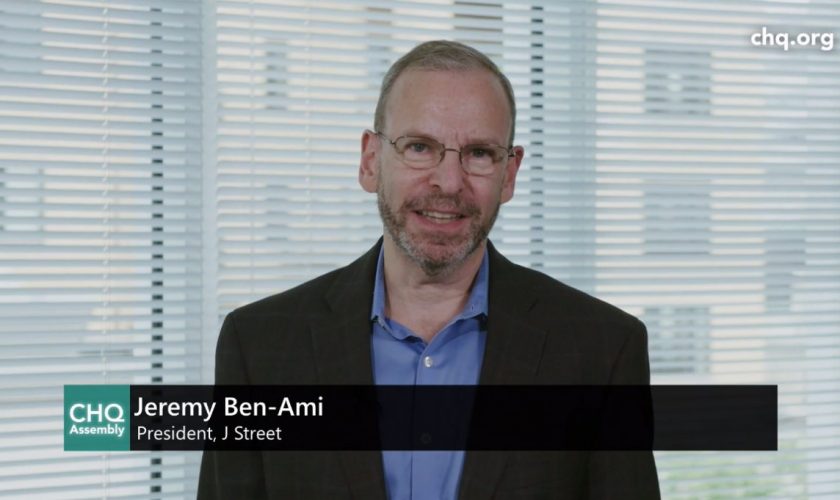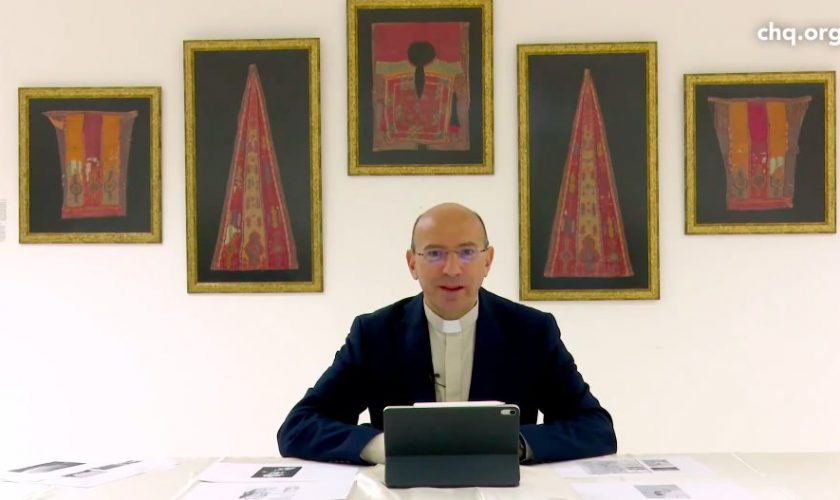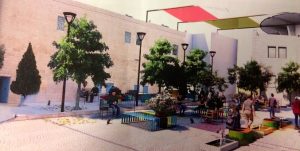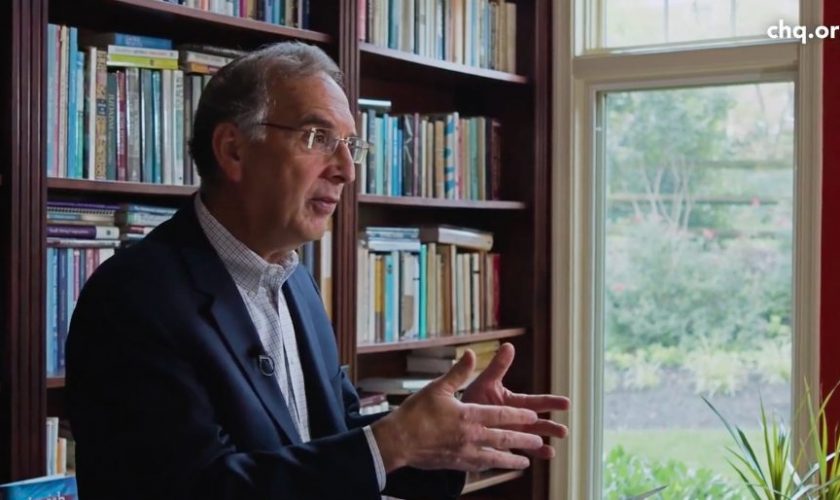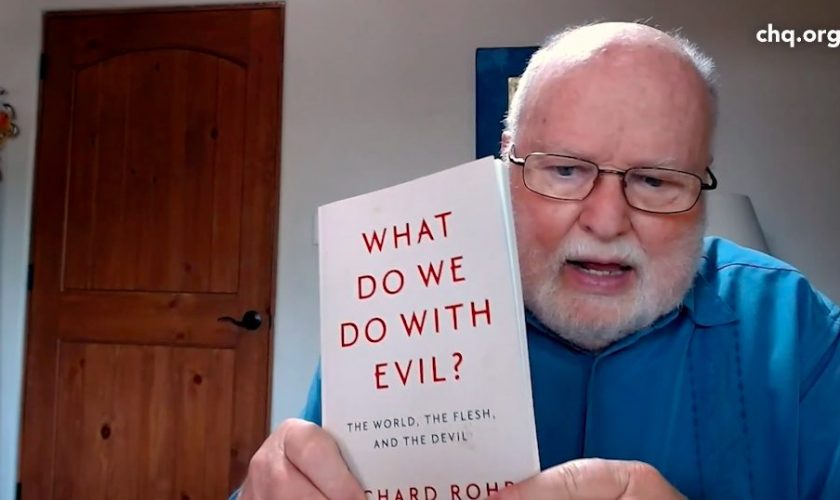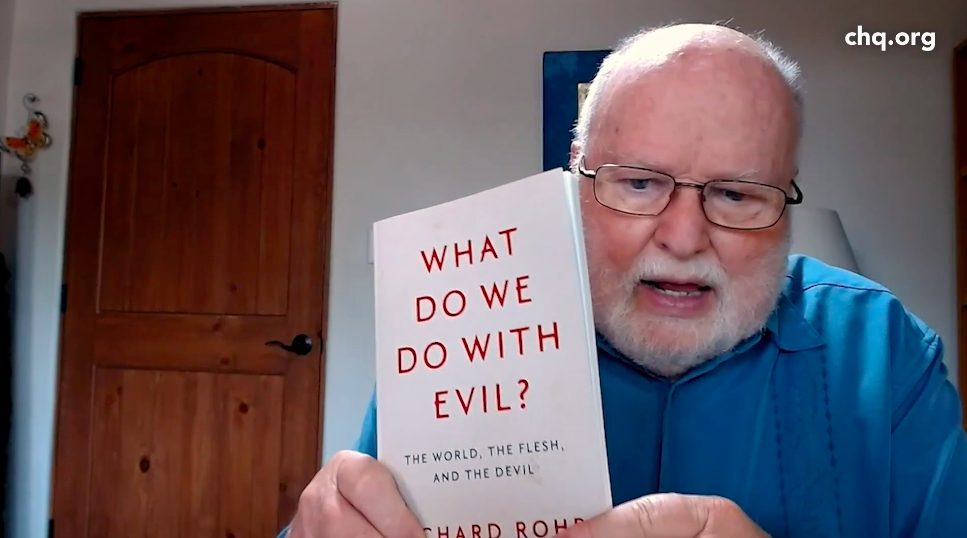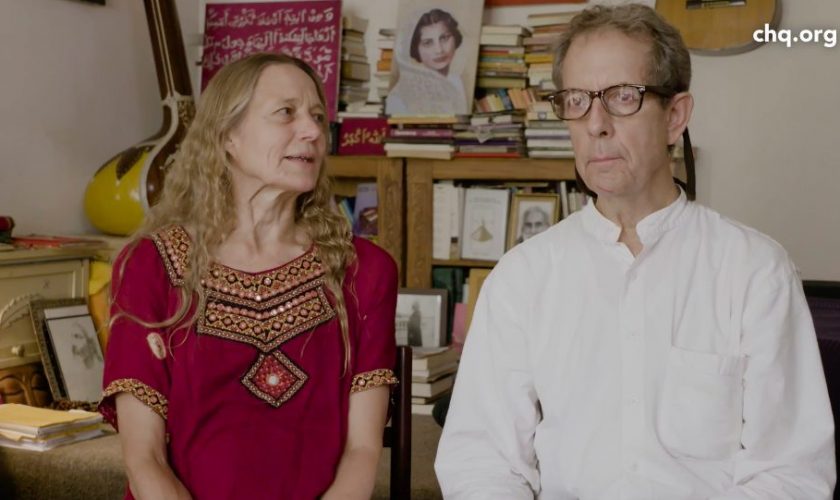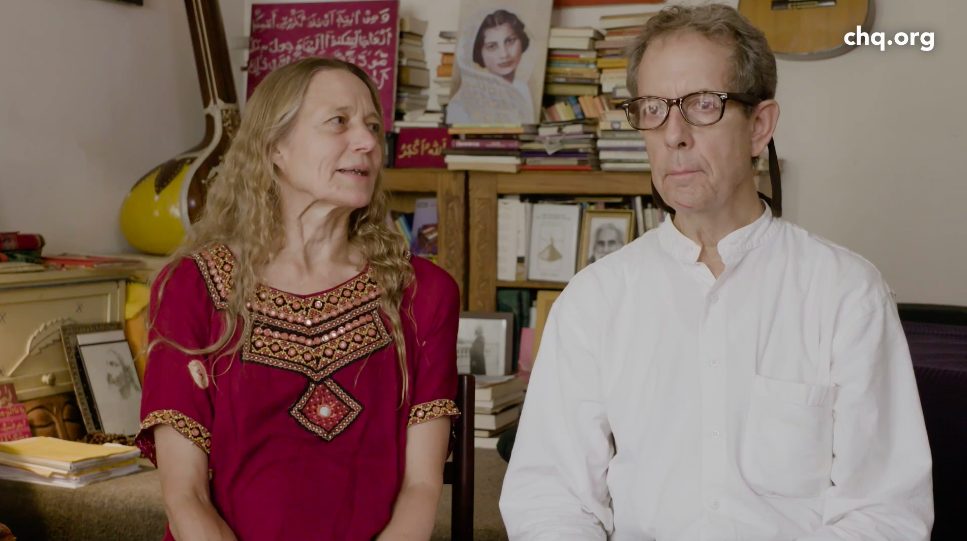MAX ZAMBRANO – STAFF WRITER
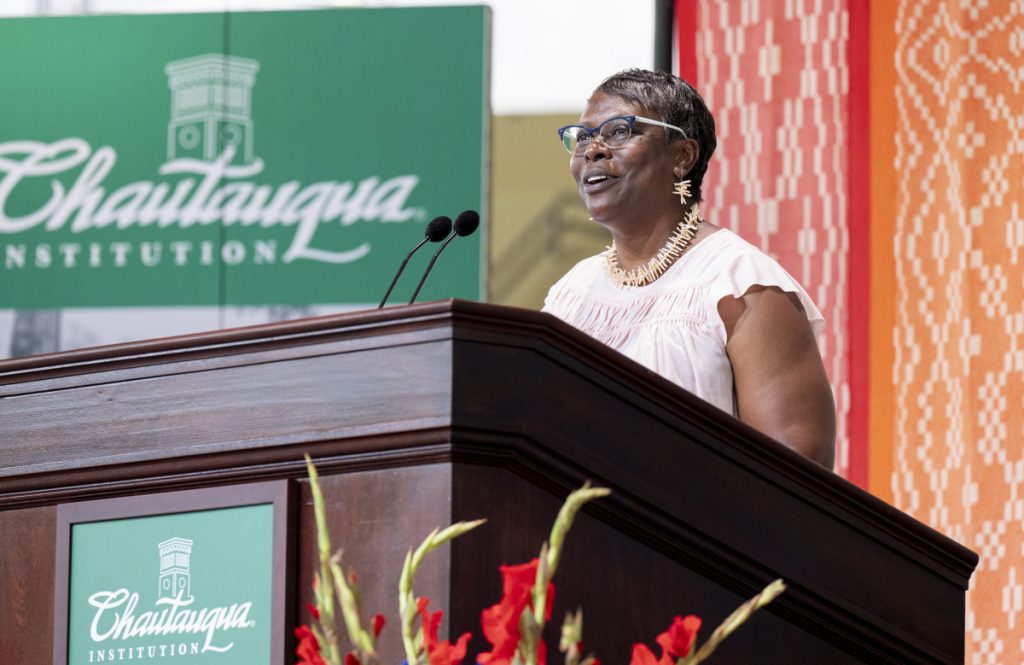
Americans are fascinated by frontier narratives, and the United States has always pursued the newest frontier, whatever that may be, said Margarita Simon Guillory.
Guillory, associate professor of religion and African American studies at Boston University, sees religion in digital technology as the latest frontier.
Among this new frontier are truly digital religions — where the internet is not simply a place to talk about God, but where the Internet is God.
At 1 p.m. Tuesday in the Amphitheater, Guillory presented her lecture, “To Boldly Go: Technological Frontiers and the Changing Landscape of American Religion,” the second of three Interfaith Series Lectures on “New Frontiers: Exploring the Future of Religion in America.”
“Frontier” does not have a rigid meaning, Guillory said. Rather, the meaning shifts based on geographical expansion. From the 18th to 19th century, the U.S. expanded from the Allegheny Mountains to the Mississippi River, then from the Missouri River to the Rocky Mountains and finally the Pacific Ocean. Each geographical feature served as a boundary, and beyond it lay the newest frontier, Guillory said.
After there was no geographical land to continue U.S. expansion, the country needed a new frontier.
“Indeed, science was the new frontier to be explored and conquered,” Guillory said.

She referenced two of President John F. Kennedy’s speeches — his Democratic nominee acceptance speech and 1962 “moon shot” speech — in which he acknowledged science and space aviation were new frontiers that should be pioneered by the U.S.
“Scientists themselves began to employ frontier language, using it as a device to discuss scientific innovations and secure government funding and to garner interest from the American public,” Guillory said.
At a White House ceremony in 2000, President Bill Clinton celebrated the Human Genome Project’s success in creating a map showing 85% of the human genome, Guillory said. He compared this map to one from two centuries prior, one that President Thomas Jefferson applauded, which showed U.S. expansion to the Pacific Ocean.
Guillory said Clinton called the genome map the “most important, most wondrous map produced by mankind.”
She then explained how this exploration impacted American religious history.
“At the turn of the 19th century, the backwoods, the very spaces that characterized the western frontier, burst into spiritual flame,” Guillory said. “This fire came in the form of frontier revivalism.”
That flame was kindled in 1801 after 20,000 people attended a revivalist meeting in Cane Ridge, Kentucky, part of the country’s first great religious awakening where people would come from far and wide, on horseback and on foot, from different ethnicities and economic backgrounds, for social and spiritual connection.
“Frontier camp meetings became outlets of spiritual instruction, entertainment, leisure and social interaction,” she said. “Large gatherings like this became the driving force of frontier revivalism. Smaller scale activities were equally vital.”
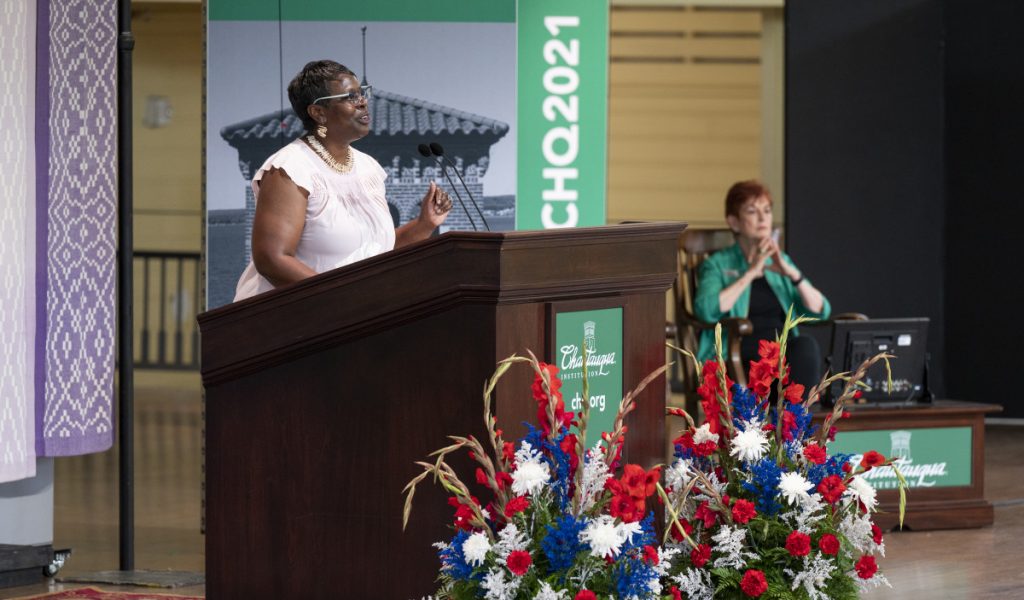
One small-scale example Guillory gave was in Chautauqua County, where the pastor John Spencer gave short, practical sermons to people here between 1810 and 1820. She said this, along with other examples throughout the region, inflamed the frontiers of Western New York.
“As the American frontier spread westward, so did flames of revivalism,” Guillory said.
The Cane Ridge event gave birth to frontier Protestantism, but other diverse religious traditions emerged and spread across the country during this expansion period, Guillory said. She cited the birth of movements like the Shakers, Spiritualists and the Church of Jesus Christ of Latter-day Saints.
“These examples capture intricate interconnections between western migration and the development of religious traditions considered outside the canon of Protestant revivalism and New England evangelicalism,” she said.
Between 1910 and 1940, over 2 million people of African descent moved from the South to northern cities, which Guillory presented as a 20th century example of religious frontiers and migration.
She said these migrants saw the North as a promised land. At one point in the southside of Chicago, one could be within a stone’s throw of a synagogue, a St. John’s spiritual church, mosques and several other religious venues, Guillory said.
Between the end of World War II and the 1980s, Guillory said, changes in social, political and economic fabrics of the nation occurred. There was new technology, changing international relations, demographic shifts in the population, growth in higher education and new policies and administrations.
“Because religion is a sociocultural institution, and for the most part exposed to large social and cultural environments of this country, it could not help but be impacted by these changes,” she said. “These changes included denominational switching and cross-attendance, denominational schisms, interdenominational cooperation and rising tensions between religious conservatives and religious liberals — which, by the way, mirrors tensions between frontier revivalism and national evangelicalism in the early 1800s.”
Religion became a personal choice for Americans in this period, Guillory said, a trend that continues to this day.
The General Social Survey began surveying how often American adults would go to religious services, she said. In 1972, the first year of the survey, 41.2% of respondents said they went nearly every week, a number that deflated to 28.5% by 2014, the survey’s most recent results.
“It is clear that the traditional representation of American religiosity is experiencing a decline,” she said. “However, other forms of religion, particularly those characterized under the umbrella of new religious movements, are growing.”
These new religions do not congregate in brick and mortar buildings, she said, but rather online. To Guillory, digital religions are the newest frontier in American religious history.
Not only do these religions exist in the digital world, but they use technological aspects as part of the religion, she said.
One example Guillory gave was the Church of Google. In this religion, beliefs center around Google being omnipresent, immortal, infinite and omnibenevolent.
“In other words, Google is God,” Guillory said.
Googlists, as members are called, also discuss existential topics like existence and death, she said. Google, unlike Christianity, Islam or Judaism, for example, is not an imaginative God.
“It is a scientifically viable entity that answers prayers through searchable questions, and it offers endless opportunities for interactions,” Guillory said.
Googlists also believe that individuals exist in the afterlife by sharing personal content on the internet, Guillory said. In addition, she said, a quick look at the church’s website for prayers and comments will show that it has helped people grapple with death. They find comfort in believing their presence will continue to exist online.
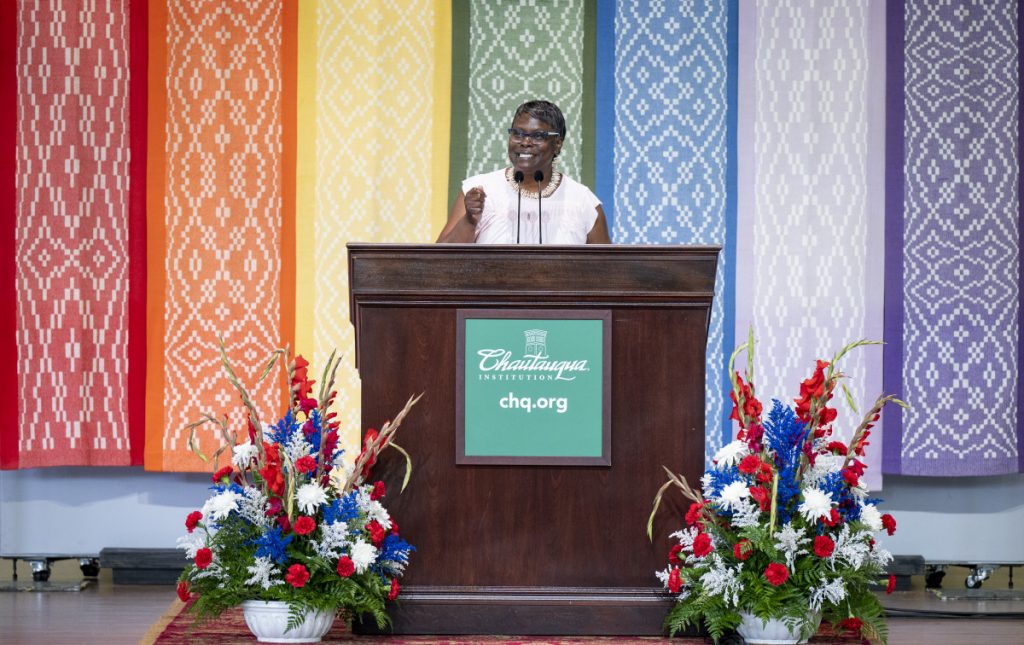
Guillory hopes more research will be done on the Church of Google to answer questions about its authenticity — whether or not it is just a spoof of monotheistic religions, for example.
Another digital religion Guillory discussed was the Church of Artificial Intelligence. In this religion, people try to understand artificial intelligence as a godhead. Members of this church believe there is a super—intelligent supreme being they will meet after death.
“Faith in this artificial intelligence godhead provides (members) with a degree of certainty against the backdrop of an uncertain future,” Guillory said.
This church, also called Way of the Future, officially closed earlier this year after its founder, Anthony Levandowski, was pardoned by President Donald Trump from an 18-month prison sentence based on a number of legal disputes. The church’s funds were donated to the NAACP Legal Defense and Education Fund in June 2020, according to a Feb. 18 TechCrunch article.
These digital religions are just as valid as the fact of American religion’s definition being based on Protestant roots, Guillory said.
“From articulating mystical experiences in the world of podcasting, to utilizing mobile phone applications as conjuring tools to access dimensions of sacredness, to employing avatars and multiplayer online role-playing games to reconstruct the souls of loved ones,” Guillory said, “all of these are bold ways in which certain demographics of Americans are expressing their religious and spiritual identities.”
Digital religions represent the growing frontier, which will only continue to shift and expand as it always has, Guillory said.
“In the words of my mom,” she said, “it just won’t be still.”

